If the barrels of the shotgun are a critical aspect of the success of shooting on the platform, we can assert that the stock plays an essential role.
The shotgun stock, often underestimated by non-experts or those approaching the sport for the first time, is very important precisely because of its objective utility.
Naturally, this is an in-depth study to thoroughly explain shooting to beginners, what they must take into consideration when choosing a shotgun for this sport and its different specialties: skeet, trap, helice, compak sporting, or American trap.
However, this discourse is different for professionals or those who habitually frequent the shooting fields, who know the importance of the shotgun stock well and devote considerable attention to trying to customize a unique adaptation which, with the classic stocks, while being feasible, is always costly.
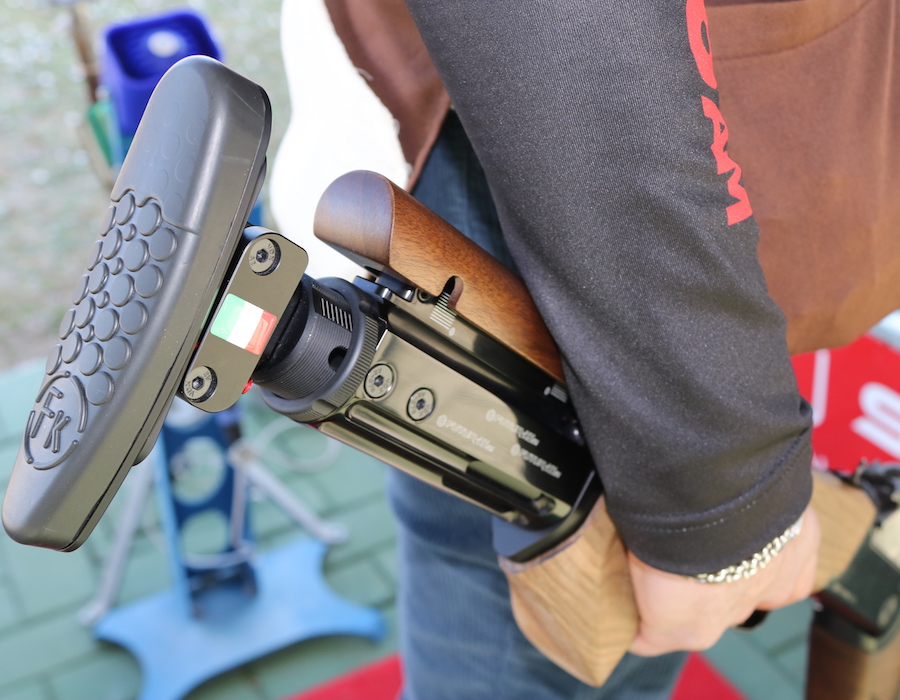
The importance of balance
Why is so much importance given to the shotgun stock?
The reason derives from the fact that the stock is not only the element needed to shoulder the shotgun to aim, aligning the barrels at eye level. However, it also constitutes the grip of the shotgun, supporting the structure. The stock has a balancing function; it distributes the energy of the recoil onto the shoulder, as a result, reducing it.
Too often, in fact, we are worried about aiming the shotgun correctly, avoiding sighting defects that can translate into missed shots and errors. The importance of the balance of the shotgun, that is, the correct placement of its center of gravity (given to us by the right stock), is hardly ever taken into account, which has a significant effect on the soaring effect of the recoil rods.
During the first phase, the ejection of the projectile, and the gases immediately after, the rotation of the shotgun occurs with respect to its center of gravity and not to the support pin on the shoulder, where it will take place again. So, if a shotgun has a backward center of gravity, the barrels move upwards, if too advanced, downwards.
However, it is easier to find shotguns on the market that move upwards more than the others, especially if you buy shotguns produced in a series.
Often some partially solve the problem by weighing down the stock by filling the internal hollow part with a few dozen grams of lead, a very simple solution.
In every case, these defects related to the lack of balance of the shotgun, translate into the difficulty in hitting the target, above all, the second shot. Instead, having an adjustable stock on the model of the modern Futur-K6 AM, many of these problems can be remedied thanks to the adjustments that can be made on the butt pad and stock and the insertion of rubber pads that can reduce the recoil. These solutions allow you to find the balance of the shotgun much easier.
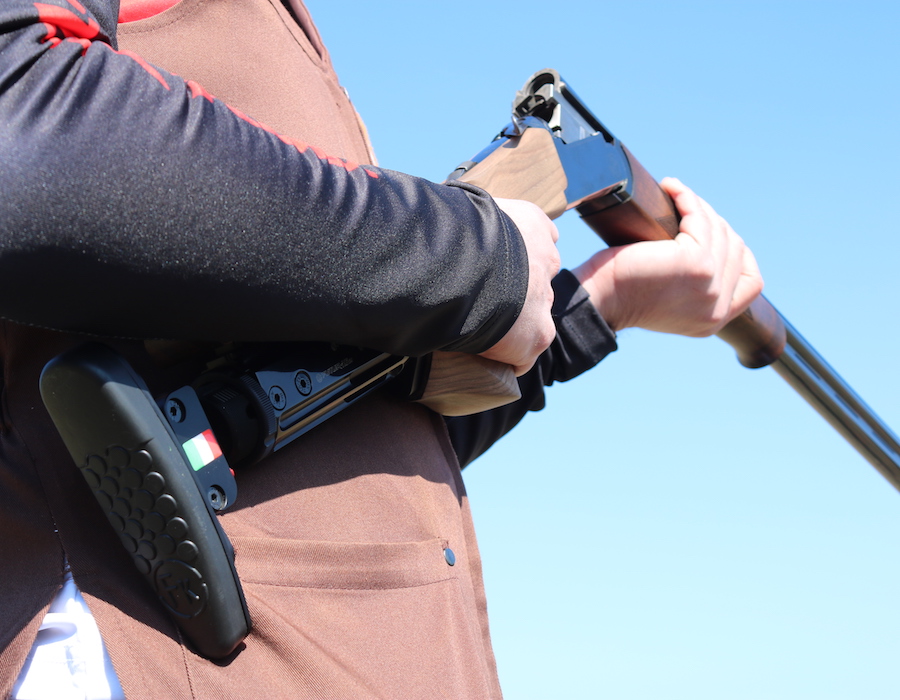
Let’s learn about the shotgun stock
To choose the right shotgun, we should learn to evaluate a stock, bearing in mind the fact that a shotgun with a stock unsuitable for our body, style, and physical structure translates into an apparent decrease in the ability to hit the target and, as a result, excellent performance.
However, to identify the essential criteria in the selection and evaluation of a wooden stock, it is also necessary to have technical knowledge that is not common to all shooters or gunsmiths.
For this reason, it would be advisable to buy an adjustable stock which, although starting from a standard size, allows you to subsequently make customized changes in terms of length of pull and deviation as in the case of the new stock in wood and aluminum by the company Futurmec Srl of Urbania.
Certainly, knowing the rudiments of the anatomy of the stock is important, but it does not transform us into experts.
The elements that we will identify by analyzing a shotgun stock, positioned in front of us with respect to the parallel, straight line of the barrels, will be the “nose” or nosepiece, the upright part that starts from the grip and reaches the cheekpiece. In some cases, it is in this position that an elevated comb is mounted to increase the Monte Carlo, especially for shooters who have a long neck.
Some shotguns, such as carbines or some slugs, have a Monte Carlo Hog Back design with a low, stocky nosepiece that tends to disappear at the level of the grip; the “heel” is the upper back part; the “tip of the butt or beak” is the lower back part.
Once these key points of the stock have been identified, it is possible to evaluate the characterizing aspects, whose modification affects the whole aiming and firing set-up, and the ability to hit the target or not.
These features will be fixed on classic wooden stocks unless you have a master craftsman available to make the necessary changes every time it is needed (a very unrealistic condition). On the other hand, the adjustable stocks, like the Futur-K6 AM, can be modified simply by adjusting the screws until you find the right solution for the shooter.
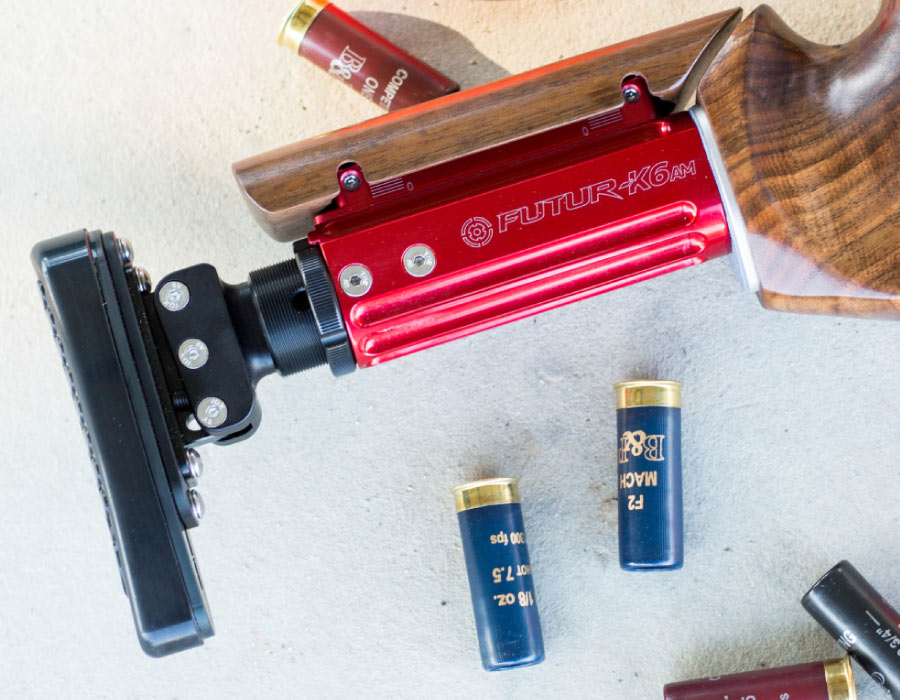
1. The length of the stock, the butt plate and the angle of “pitch”
The length of the shotgun stock is approximately 370 mm, but if you want to customize it, you will always need to consider the shooter’s measurements. The optimal length of the stock must correspond to the length of the forearm measured from the inner corner of the elbow to the tip of the index finger; the measurement must then be decreased by 2 cm.
The shotgun stock is usually longer than that of the shotgun because it shoots at targets on command and never jabs. To increase the length of the standard stock, the butt plate is used and modeled based on the shape and size of the stock. Furthermore, the butt plate can also be used to cushion the recoil and is also used for custom-made stocks.
Another important aspect, depending on the butt plate, is the pitch, that is, the angle of the butt of the stock. You can simply measure the angle that the wall forms with the rib line by placing the shotgun with the stock on the ground and the rods on the wall. Its maximum value is 10° and decreases proportionally to the sturdiness and grandeur of the shooter’s shoulders and chest up to 0 in very thin shooters.
The pitch angle must be measured based on body dimensions, as well as on the shouldering style; in fact, it will be higher for those who shoot in an erect way and less for those who shoot with their trunk bent forward. However, the pitch can always be modified by removing wood from the back of the stock or adding thickness. Having an ideal pitch means maximizing the aim and thus having more chances to hit the target.

2. The fold
The fold or slope of the stock is the element that allows us to anticipate the shots upwards or downwards.
Clearly, shotguns have more pronounced downward folds than the platform ones because we often shoot downwards by shooting the ground or game that tends to glide downwards. When we are on the platform, we make upward shots to hit targets that tend to rise.
A different discussion should be had if you want to practice skeet, in which alternating pitches tend downwards or, in the case of sporting, assuming the dash of hare or rabbit and rolling right on the ground. Therefore, we will have a similar fold to that of hunting.
Both the fold and the pitch produce displacements of the firing axis because they affect the shotgun’s aim, which is already in the shouldering phase. Since a stock can be customized, establishing a correct fold, it is possible to consult tables showing the measurements that must be taken into consideration by the shooter.
First of all, the distance between the aiming pupil and the horizontal line of the shooter’s shoulder at the point where the butt plate is placed must be measured vertically. This distance is called “neck length”, and from the tables available, the necessary slope is obtained for the “heel” and “nosepiece”.
It is clear that if you intend to buy a classic wooden stock, these operations must be carried out at a craftsman’s workshop, where they can make the adjustments detected. While with a type of stock like the Futur-K6 AM, it will be possible to carry out adjustments easily on the shooting range itself or between one run and another of the shotgun on the pattern plate, better if followed by an instructor.

3. The advantage or deviation
Another essential feature of a stock is its thickness or width, which must be aligned to the shooter’s face and cheeks, as well as to the size of their shoulders. With this information, you can determine the value necessary for the lateral deviation of the stock, called “cast”. It serves to align the eye that aims with the axis of the barrels. It usually fluctuates between 4 and 8 mm at the heel of the stock, and between 6 and 11 mm at the muzzle.
Deviations with larger measurements are not recommended because they affect the asymmetry of the barrels. A very thick stock or the presence of a small cheekpiece require the cast to be increased and are not comfortable for those who shoot fast, while they may not affect those who shoot with a slow and smooth technique.
To measure the deviation, it is necessary to measure the width of the shooter’s chest between the attachment points of the arms. In this way, we will try to prevent the stock from ending up on the humerus or the pectoral muscle.
4. The grip
The grip of the stock can be straight like the English one, or a semi-pistol, full-pistol, or swan-neck curve. In single-trigger and shooting shotguns, in particular, the full-pistol grip is preferred because it guarantees an excellent grip of the shotgun. Nowadays, you can find grips that also have accentuated ergonomics that allow a perfect grip of the shotgun. The other forms are more suitable for hunting shotguns and double trigger.
However, it is good to remember that in the old days, some shotguns had English grips that were comfortable and effective for shooters; just remember the clay pigeon side-by-side shotguns.
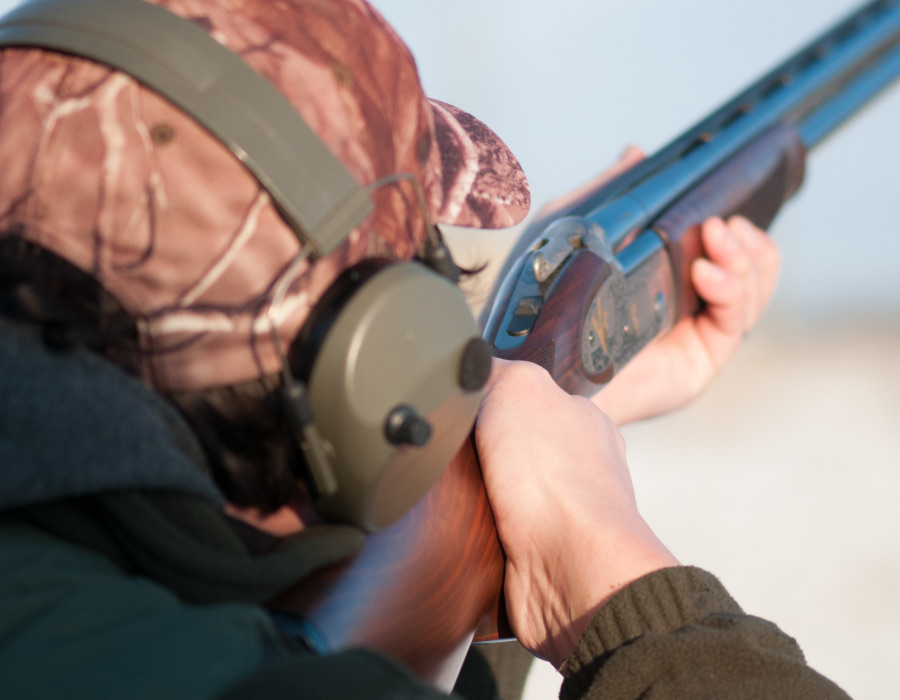
5. The quality of the stock’s structure
A stock is usually made of walnut briar. However, there are various qualities; what counts in a high-level stock is the fiber that determines its density and weight. This should be between 600 and 900 grams, heavier or lighter stocks greatly affect the balance of the shotgun.
It is very difficult to find a very veined wood that is of good quality from the point of view of efficacy because it must be composed of a long fiber able to absorb the vibrations of the recoil; vice versa a short fiber will transmit the vibrations to the cheekbone and the shooter’s shoulder.
A stock in aluminum and wood, much more simply, has a highly technical structure and is designed specifically for shooting and the platform. It is able to undergo continuous stress and reduces it in favor of a greater balance of the shotgun and less recoil for the shooter.
How to get a customized stock
There are two ways to get a customized stock. You can have it built by a craftsman, or you can buy a fully adjustable stock like Futur-K6 AM.
The first solution could present negativities, above all, from the economic point of view because these are interventions that only a few can afford as they are very expensive and that only a few artisans can implement.
Furthermore, waiting times are not exactly short and immediate, and it is often necessary to check in with the artisan to evaluate the progress of the work and the setting of the stock for the shooter. Again, the stock will only be adapted to that shotgun, so if you are thinking of changing shotguns, you should also modify or change stock.
In the second case, on the other hand, by purchasing the Futur-K6 AM stock, there will be several advantages, especially the technical one, which we specify later.
This type of stock allows you to keep costs down and make the necessary adjustments quickly and easily, shortening the time to make the right stock for the shooter.
In addition, the Futur-K6AM adjustable shotgun stock is equipped with a series of adaptation kits and can be mounted on the best brands of shotguns on the market.
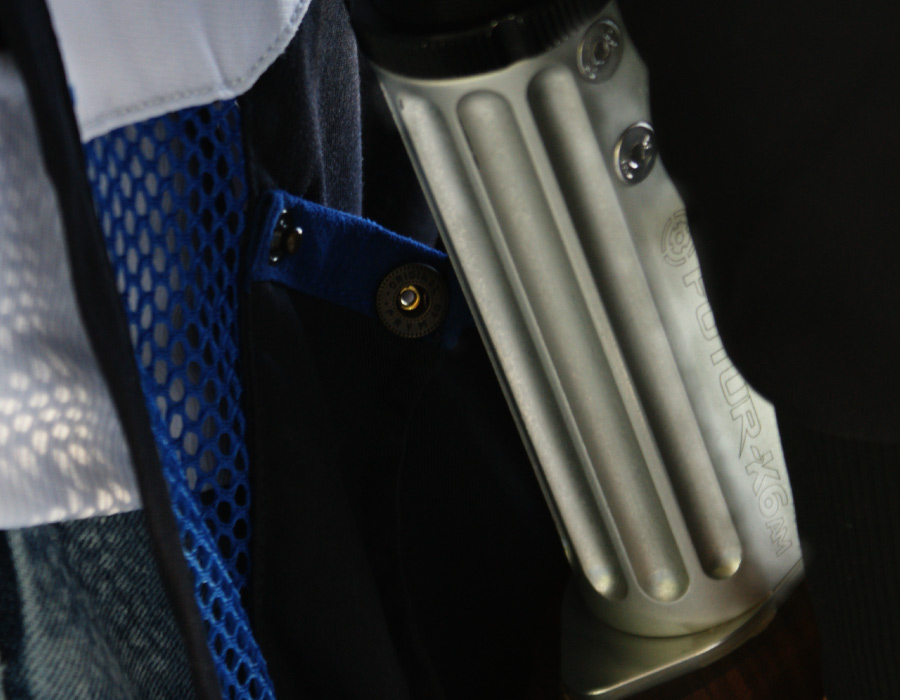
So a classic stock or Futur-K6AM?
At the end of the analysis carried out, when we go to the armory to buy the shotgun, we will find a standard stock mounted, which can be suitable for many shooters, but not all, because it does not adapt perfectly to the physical peculiarities of each individual.
Many experienced shooters are able to understand if a stock “falls well” by shouldering the shotgun a couple of times, others, especially for beginners, need the advice of more experienced people who can analyze their shouldering and highlight any defects.
As previously mentioned, the search for a calibrated personal stock built with perfectly seasoned woods capable of absorbing the recoil of the shotgun will be difficult and uneconomic and built to give a correct setting for the shooter.
The shotgun stock is also a very particular object that requires, especially during identification and customization, a certain skill. Many argue that “the shotgun stock never finds peace” and, indeed, how can this statement be wrong.
Anyone intending to approach the sport of shooting should understand that the shotgun represents the extension of the shooter’s body. By shooting a few hundred cartridges per training session and having to absorb a large number of recoil shots, it is understandable that the element that connects the shotgun to our body, the stock, must be as suitable as possible to our body and able to absorb the blows by lightning the recoil.
As the body size changes, such as the growth phase for boys or weight loss or weight gain for adults, it is normal for the stock to undergo changes as well, otherwise, you will risk having an unbalanced and inadequate weapon.
So, if you have a classic wooden stock, this change and adaptation translate into changes that will have to be made by a craftsman, not always easily available in your territory, with long wait times and high costs. If, on the other hand, you have an adjustable stock of aluminum and wood, the change can be made very quickly and at no cost.
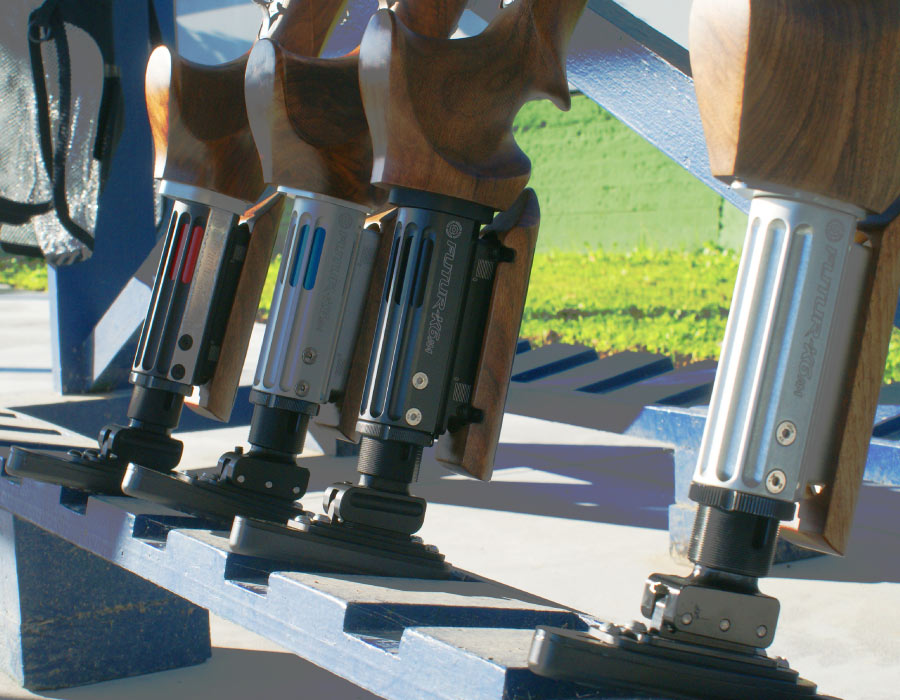
The Futur-K6AM stock is an excellent answer to the problems that a shooter can encounter during the course of their career. It is a very technical but also elegant and modern stock in wood and aluminum, customizable in colors and engravings. It also allows for modifications starting from a single product that adapts to the shooter’s needs, including physical needs, the way they shoot, and the shouldering setting.
It starts with a standard product, in practice, which is then configured to the shooter’s body by simply adjusting a system of screws that support the structure of the stock.
The stock has a body made entirely of anodized aluminum, except for the high-density rubber butt plate, Monte Carlo, nosepiece, and highly ergonomic grip, which are in selected walnut with the possibility of modifying the latter according to the measurements of the shooter’s hand.
This stock allows you to lengthen, raise, and lower the Montecarlo and the nosepiece; the possibility of moving the butt plate not only to determine the advance upwards and the pitch angle but also in terms of fold and deviation is useful.
The screws that allow the adjustment of the stock are made of high-strength stainless steel, able to withstand stress and maintain the position of the stock once set. The weight that has been achieved by combining these elements is extremely balanced, being only 900 grams.
The Futur-K6AM is equipped with a series of adaptable attachments that make it compatible with different brands of shotguns, thus becoming an excellent solution for shooters wishing to change shotguns.
The company Futurmec S.r.l. of Urbania has achieved high-level results from a technical and practical point of view with their adjustable and easily adaptable stock, but at the same time, prestige and high technical content. The solution designed to reduce the effect of the recoil also makes the act of firing much simpler and less tiring.
This aspect allows those who use the Futur-K6AM stock to face training sessions and competitions in a much simpler way because the stress deriving from the numerous shots will be significantly reduced. Above all, they will be facilitated in second-barrel recoveries because the shotgun that mounts this stock will be much more balanced and less subject to rotation, therefore easier to keep on the target path.
